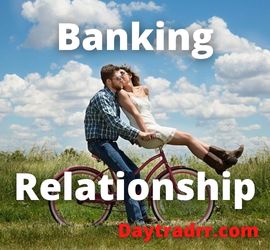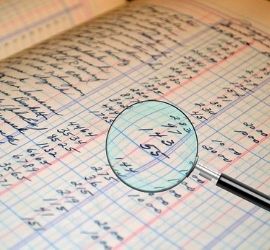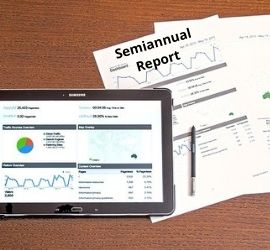What is a Banking Relationship vs Relationship Banking?
 You need to have a banking relationship, especially if you’re an entrepreneur or business owner. Having a good bank is key to running a successful business. From getting a loan or line of credit to getting help with invoices and tax season, it’s important to be on good terms with your bank. When it comes to business and banking, being on good terms is more than just your credit score.
You need to have a banking relationship, especially if you’re an entrepreneur or business owner. Having a good bank is key to running a successful business. From getting a loan or line of credit to getting help with invoices and tax season, it’s important to be on good terms with your bank. When it comes to business and banking, being on good terms is more than just your credit score.
Relationship banking is a strategy used by banks to strengthen customer loyalty and provide a single point of service for a range of different products and services. A customer of a bank may start out with a simple checking or savings account, but relationship banking involves a personal or business banker offering products designed to help customers attain financial goals while increasing revenue for the financial institution.
Is a Banking Relationship Important for Your Business?
Giving your banker a deeper insight into your business can be a good thing. This includes an annual examination of your business strategies, financial statements, and tax returns. The information can give insight and the ability to provide counsel and services that assist you in meeting your objectives. A solid financial relationship can go even further. For example, potentially opening doors to the banker’s own business network. In reality, owners who do not optimize their banking relationships risk missing out on a variety of options that could help them succeed. The worth of a solid financial connection can be translated into:
- Interest rates and loan terms – Owners with strong banking relationships are often offered better interest rates, loan structures, and terms than those who walk in cold off the street. Higher rates on deposits are also possible, especially as your relationship expands and the value of your deposits grows.
- Fewer or lower fees – While banking services aren’t free, you may be able to negotiate lower fees on loans and other products by consolidating all of your accounts and services with a single bank.
- Improved cash flow – As your business grows, it may benefit from services that speed up the collections cycle and payments systems that allow you to hold cash longer. A banker who understands your cash flow needs may be able to guide you to options that address them.
- Strategic planning – A banker who understands your financial history can be helpful when planning your business’ future. Likewise, you will be in a better position to jump on opportunities if you know your borrowing capacity and interest rates ahead of time. Your banker’s analysis of your debt ratios, receivables, and other financial data can help assure your financial results align with and support your vision. (Source: commercebank.com)
How to Establish a Banking Relationship
It takes effort to build a good friendship. The same is true for a banking relationship. Here are some suggestions on how to collaborate with your banker to build a trusting and long-term relationship.
Communicate
Treat your banker in the same way you would any other potential client or business partner. Maintain contact with them and inform them of major business achievements. Make an effort to meet with your financing officer or branch manager in person. While most businesses may be conducted online these days, nothing beats meeting in person. This is especially true for smaller financial institutions. If a loan officer can put a face to a name, they are more likely to remember you and provide the assistance your company needs. Also, keep in mind that bankers are people, too! Feel free to share any personal information with them that you see appropriate.
Share your plans and goals
Your banker needs to understand your company and where you plan to take it. Try to keep them up to date on your company’s progress. If a banker understands your company’s cash flow, they are more likely to propose items that are more appropriate for your needs. It’s also critical to keep your lender up to date on any modifications to your business plan. They can counsel you on how to safeguard your company’s financial well-being if they know where you’re going.
Honesty is the best policy
In any relationship, honesty is essential. This includes your banker. Inform your bank if you are experiencing financial difficulties or are concerned about future cash flow. Your bank can assist you in both good and bad times. If they understand your specific circumstance, they may suggest a product or service that you had not considered. None of this is feasible unless you keep your banker up to date.
Build a strong financial history
When you need to approach your lender for something, having a stable financial past will help. Pay your invoices on time, make regular deposits, and pay off your loans as soon as possible. Banks create money by making loans to individuals and businesses. You need to demonstrate that your finances are sound. Then, you will be more likely to receive the financial assistance you require when you ask for it.
Get to Know Everyone on Your Banking Team
Most of your contact is probably with your relationship manager. But, other members of your banking team can be valuable to know in advance of a specific financial need. Important members might include a credit officer or approver, your RM’s manager, a wealth planner, a personal banker, and an investment advisor. This helps to cement understanding of your company at the bank and establish trust and confidence in your business, and it also helps smooth the transition if there is a change in personnel.
Your Banking Relationship and Your Bottom Line
Your bank wants a strong relationship with you and it wants to gain your trust. Conversely, you want your bank to provide the financial solutions you require when you require them. These objectives are mutually beneficial. The greater your bank’s ability to deliver the correct solutions to your business at the right moment, the more trust (and business) it will acquire from your firm. And the bank’s grasp of your business model will be more complete the more of your company’s business it possesses. Better knowledge leads to more intelligent advice from your bank, provided in a more proactive manner to assist your business’s success.
What to Expect from a Banking Relationship
The bank you select should not only be able to deliver the products and services a business requires. Your bank should be able to tailor and scale them to the needs of your specific business. Additionally, your banker should supply you with vital information that is not readily available elsewhere.
- Economic trends – Industry trends, issues, and updates.
- Expert feedback – Analysis of your financial statements.
- Comparison data – Recent debt capital market deal pricing and deal structure for other companies in your industry. Bank financial and credit metrics.
- Industry benchmarks – Financial comparisons and benchmarks to other companies in your industry. Industry data and statistics to help you measure your company’s performance against your competitors and peers.
- Expert advice – Suggestions for solving vexing financial or operational challenges.
- Networking – Connections with other executives with whom you can interact. Introductions to other professional service providers like attorneys, CPAs, investment bankers, and insurance brokers.
Relationship Banking – A Closer Look
Relationship banking is a proactive, customer-centric business philosophy. It entails the bank anticipating customers’ needs and taking steps to meet those needs before the client expresses them. The basic principle of this strategy is to create more a more cooperative and complete working connection with each client. Then, the bank can assess his or her specific requirements and make recommendations about the appropriate services available from the bank. This method is a frequent strategy with smaller banks that take a more personal approach with customers. However, a growing number of large bank organizations are encouraging similar strategies in their local offices. Banks that practice relationship banking take a personal and consultative approach with customers. They take the time to get to know clients’ particular situations and needs.
Whether for an individual or small business, relationship bankers will engage in high-touch service to try to make their banks the ‘one-stop shop’ for their customer’s A-to-Z needs. Examples of products offered in the banking world include certificates of deposit, safe deposit boxes, insurance plans, investments, credit cards, all types of loans, and business services (e.g., credit card or payroll processing). Relationship bankers may also include specialized financial products designed for specific demographics, such as students, seniors, and high net worth individuals. Cross-selling is the modus operandi of relationship bankers, but they must be careful. Federal anti-tying laws established by the Bank Holding Company Act Amendments of 1970 prevent banks from making the provision of one product or service contingent on another with some exceptions. (Source: investopedia.com)
Advantages and Disadvantages of Relationship Banking
Customers may be able to take advantage of a bank’s intention to establish a closer client relationship. This might include gaining more favorable rates, paying fewer fees, as well as a greater level of customer service. This is especially possible when dealing with a smaller bank such as a community bank. For example, consider a customer who obtains a mortgage loan from a bank. The customer may also be able to open a checking account that is not subject to fees if a proper minimum balance is maintained. In business, if a small firm obtains a revolving line of credit, it may be in a position to negotiate cheaper fees for processing its merchant transactions.
Relationship Banking – What to Watch
However, there are also disadvantages to relationship management for clients. For example, being locked into one bank for all your financial services requirements. Also, the risk of being complacent rather than evaluating services and costs among financial institutions. Client privacy and data security are also serious threats. This is because a single bank has access to integrated financial data about the client. Moreover, if there is a data breach at the bank, client accounts are widely exposed. Relationship management may also raise the bank’s risk exposure with individual clients in the event of failure. The bank also has a strong incentive to push other financial products to their “valued” customers.
Client approval is mandatory when cross-selling bank services in the course of relationship banking. As the 2018 Wells Fargo scandal demonstrated, such trust can be violated. A flawed and aggressive incentive (and punishment) system that the bank implemented for relationship bankers at a number of retail branches from around 2011 to 2016 led to millions of new account openings. The problem was that customers did not authorize the bankers to open them. Trust is the foundation of successful relationship banking, but Wells Fargo broke that trust for millions of customers. A bank must have a culture of ethical service to practice relationship banking for the mutual benefit of the bank and customer. (Source: ibid)
Up Next: What Is a Dealer Market?
 A dealer market is a financial market where dealers list prices they are willing to purchase and sell specific assets for their own account. Dealers add liquidity and act as market makers. The dealer market is sometimes known as an OTC market (over-the-counter). This means that financial products, such as securities, are traded directly between individuals. Trading does not require the services of a private security dealer.
A dealer market is a financial market where dealers list prices they are willing to purchase and sell specific assets for their own account. Dealers add liquidity and act as market makers. The dealer market is sometimes known as an OTC market (over-the-counter). This means that financial products, such as securities, are traded directly between individuals. Trading does not require the services of a private security dealer.
A dealer market is a financial exchange process in which numerous dealers list prices at which they intend to buy or sell specific securities. Each dealer is known as a market maker. They provide liquidity and transparency by electronically displaying the prices they are willing to accept in exchange for a particular security. On display is the price they will buy the security, known as the bid price. Also on display is the price at which they will sell the security, known as the offer price.
Bonds and foreign exchanges are primarily traded in dealer markets. Stocks trading on the Nasdaq are an example of an equity dealer market. The NASDAQ system was founded in 1971 as a part of the Over-the-Counter (OTC) market. However, it is now considered a separate entity. In this market, a buyer and seller are never put together. Instead, their orders are (buy/sell) executed through marker makers that are the dealers.




